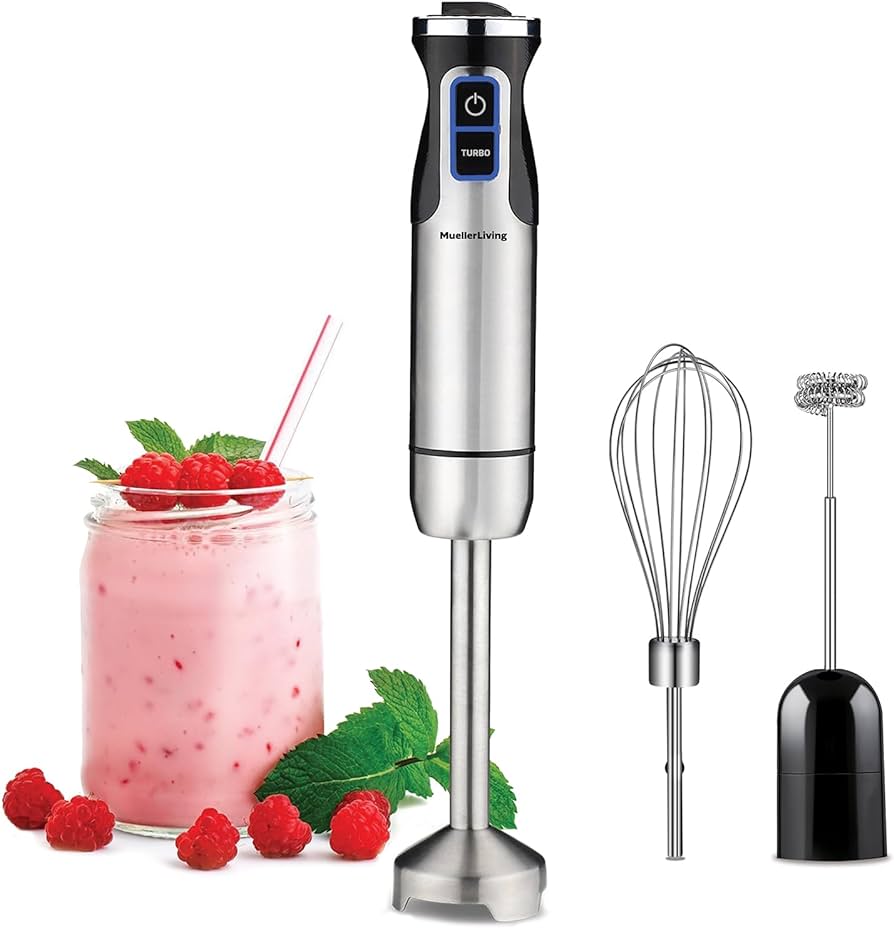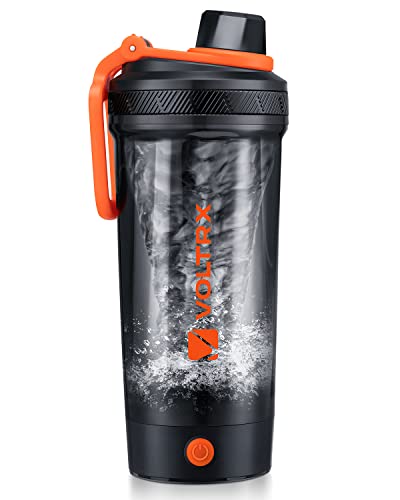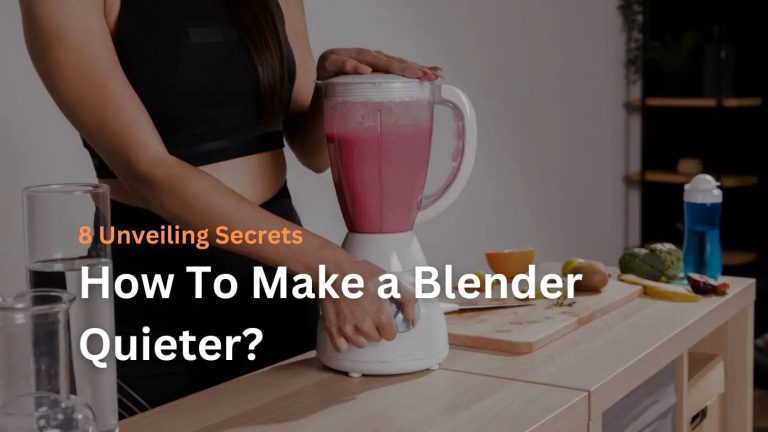Types Of Blender Blades: Unleashing Your Mixer’s Might
Blender blades come in two main types: wet and dry. Wet blades blend liquids efficiently, while dry blades grind grains and spices.
Blenders are versatile kitchen appliances that you’ve probably used for making smoothies or sauces. The secret behind their functionality lies in the blades. Choosing the right type of blender blade is crucial for the task at hand. Wet and dry blades are specifically designed to handle different ingredients and achieve different textures.
A wet blade typically has a stronger and more curved design to create a vortex that pulls liquid down, ensuring smooth blending of juicy fruits and vegetables. Dry blades, on the other hand, have a flatter design that pushes ingredients upward, making them ideal for grinding dry items like coffee beans, nuts, or grains into fine powders. Always consider the intended use of your blender to select the appropriate blade type, ensuring peak performance and durability. Remember, using the correct blade can transform your blending experience, delivering consistent results in your culinary creations.
Unraveling Blender Blade Varieties
Unraveling Blender Blade Varieties is like unlocking the secret to smoothie success, perfectly ground spices, or the creamiest soups. Each blade type serves a unique purpose. Understanding these can transform the way you use your blender. Let’s dive into the world of blender blades and discover which one best suits your culinary adventures.
Cross Blades: The All-rounder
Cross blades are the jack-of-all-trades in the blender universe. Their four-pronged design makes them ideal for tackling a variety of tasks. With cross blades, you can:
- Chop fruits and veggies with ease.
- Crush ice for chilled beverages.
- Puree soups to silky perfection.
They fit most standard blenders and are a go-to for everyday use. Whether you’re making a smoothie or a sauce, cross blades get the job done.
Flat Blades: Fine Grinding Maestro
Flat blades excel in fine grinding and offer precise results. Their two-pronged, flat layout is perfect for:
- Grinding coffee beans for the freshest brew.
- Turning whole spices into fine powders.
- Making nut butter with a smooth finish.
If your recipes call for finely ground ingredients, flat blades will be your best friend. They work superbly for dry blends and offer consistent textures.

Credit: www.washingtonpost.com
Match The Blade To The Task
Match the Blade to the Task is key in leveraging your blender’s capabilities. Not all blades are alike, and each type serves a unique purpose. From crushing ice to pureeing soups, selecting the appropriate blade ensures optimal texture and performance. Understand the role of each blade to transform ingredients into culinary delights with precision.
Crushing Ice: Choose The Right Edge
For frosty beverages and smoothies, ice is the backbone. A robust, stainless steel blade with multiple prongs excels in this task. To effectively break ice into snow-like consistency, search for blades labeled as ice-crushing or ice saber. These blades maintain their edge despite the hardness of ice, providing a consistent crush every time.
| Blade Type | Design Features | Ice Crushing Effectiveness |
|---|---|---|
| Ice-Crushing Blade | Sturdy build, sharp edges | High |
| Standard Blade | Multi-purpose, less sharp | Medium |
| Dough Blade | Plastic, dull edge | Low |
Pureeing Soups: Ensuring Silky Smoothness
Pureeing soups requires a blade designed for consistency and smoothness. A blade that creates a vortex, pulling the ingredients downward, ensures even mixing. Look for blades with a slightly curved up edge. This design helps move the liquid around for a velvety smooth puree.
- Curved Blade Edges: Promotes smooth purees
- Flat Blades: Less effective for liquid
- Wingtip Blades: Good for general use, but not specialized for pureeing
Material Matters In Blender Blades
When choosing a blender, the type of blade is crucial. Blades must be tough and sharp. Their material affects performance and durability. We will look at two common blade materials.
Stainless Steel: Durable And Reliable
Stainless steel blades are the go-to for most blenders. They last long and stay sharp. Here are their benefits:
- Corrosion-resistant: No rust means they last longer.
- Easy to clean: Just rinse after use.
- Food-safe: No harmful chemicals.
Most professional kitchens prefer stainless steel for its durability.
Carbon Steel: Understanding The Trade-offs
Carbon steel blades are sharp but require care. They can rust if not dried well. Here is what to know:
- Extremely sharp: Great for tough items.
- Maintenance: Dry after washing to prevent rust.
- Affordable: Often cheaper than stainless steel.
Carbon steel needs attention but offers sharpness that can make blending fast and efficient.

Credit: www.amazon.com
Maintenance And Care For Longevity
Blenders are a kitchen staple, but to keep them in top shape, proper maintenance is key. Over time, blender blades can dull and wear out, compromising performance. Regular cleaning and timely replacement are essential to ensure your blender operates efficiently. Let’s explore how to care for your blender’s blades for lasting use.
Cleaning Techniques for Pristine BladesCleaning Techniques For Pristine Blades
Keeping blender blades clean is straightforward but important. Here are easy steps to maintain pristine blades:
- Rinse immediately after use to avoid residue build-up.
- Fill the blender with warm water and a drop of dish soap. Run on high for 30 seconds.
- Disassemble the blade unit, if possible, and use a brush for a thorough clean.
- Avoid harsh chemicals or abrasives that can dull or damage the blades.
- Dry completely before reassembling to prevent rust or corrosion.
For sticky messes, consider a baking soda paste applied directly to the blades, followed by a gentle scrub.
When to Replace: Signs of Wear and TearWhen To Replace: Signs Of Wear And Tear
Blender blades don’t last forever. Recognize the signs when they need replacing:
| Signs of Wear | Action Needed |
|---|---|
| Visible nicks or dents on blades | Replace the blade assembly |
| Blender struggles to perform basic tasks | Inspect and consider replacement |
| Unusual noises during operation | Consult the manufacturer or replace |
| Rust on the blades or at joints | Replace immediately to ensure food safety |
Regular inspection can catch these issues early. Consult your blender’s manual for specific guidance on replacements.
Blades And Motor Power: A Synergy For Efficiency
Your blender’s performance hinges on two critical components – blades and motor power. Together, they create a synergy that can take your blending experience from frustrating to flawless. Understand their dynamics, and you unlock the secret to a more efficient kitchen.
Balancing Blade Type With Motor Strength
Not all blender blades are equal, and neither are the motors they work with. A strong motor can be less effective with poor blade design. Conversely, sharp, well-designed blades lose their edge with a weak motor. The key is finding the right balance.
- Flat blades are great for dry ingredients. They need moderate power motors.
- Cross blades puree and blend liquids well. Pair them with high-speed motors.
Maximizing Performance: Compatibility Tips
For optimum performance, blades and motors must complement each other. Follow these tips:
| Blade Type | Motor Power (Watts) | Suitable For |
|---|---|---|
| Stainless Steel | 500-800 | General use |
| Carbon Steel | 800-1000 | Heavy-duty tasks |
| Aerating | 1000-1200 | Frothy drinks |
Consider the wattage – the higher the watts, the stronger the motor. Make sure the blade material matches the intended use for best results.
Innovation In Blade Technology
Blender blades are the heart of any blending machine. Recent years have seen remarkable growth in blade technology. Not only are these developments making our kitchen experiences more efficient but also promoting sustainability. In this segment, we delve into the advancements that are shaping the world of blender blades.
The Rise Of Multi-function Blades
Cutting-edge multi-function blades are transforming kitchen routines. These innovative blades boast the ability to chop, grind, blend, and liquify all with a single attachment. Below outlines the key features of these versatile kitchen tools:
- Sharpness: Precision engineering ensures lasting sharpness.
- Design: Blades are crafted to create a vortex, improving blend consistency.
- Materials: High-quality stainless steel resists corrosion and wear.
- Compatibility: Designed to fit various blender models for universal use.
Future Trends: Eco-friendly And Biodegradable Options
Sustainability guides the future of blender blade manufacturing. Companies are exploring materials that minimize environmental impact. Here’s what to expect:
| Material | Features | Benefits |
|---|---|---|
| Recycled Metals | Upcycling scrap metal | Reduces waste |
| Bioplastics | Derived from plant sources | Compostable and renewable |
| Wood Composites | Wood particles with a resin binder | Biodegradable with a smaller carbon footprint |
These eco-friendly blades support a greener planet. They offer an innovative solution that aligns with environmental values without sacrificing performance. It’s an exciting era for kitchen appliance innovation!

Credit: www.ebay.com
Frequently Asked Questions Of Types Of Blender Blades
What Are The Main Types Of Blender Blades?
Blender blades typically come in various shapes designed for specific tasks. The most common types include cross blades for general blending, flat blades for grinding and crushing, and serrated blades for ice and tougher ingredients. Each type optimizes the blender’s performance for particular food textures.
How Do Different Blender Blades Affect Blending?
Different blades influence the texture and efficiency of blending. A cross blade is versatile for smooth blending. Flat blades excel at grinding dry ingredients. Serrated blades handle ice and frozen fruits better, preventing motor strain and producing smoother results in frozen concoctions.
Can Blender Blades Be Interchanged?
Many blender models offer interchangeable blades for versatility. However, it’s crucial to use blades compatible with your specific model to ensure proper fit and optimal performance. Always consult the manufacturer’s guidelines before switching blades.
How To Choose The Right Blender Blade?
Select the right blade based on your blending needs. For smoothies and liquid recipes, a cross blade is suitable. If you’re into grinding spices or coffee, a flat blade is better. For frozen desserts or crushing ice, opt for a serrated blade or an ice-crushing specific blade.
Conclusion
Understanding blender blades is key to mastering your kitchen mixtures. Each type suits different tasks, from silky smoothies to chunky salsas. Remember, the right blade can elevate your blending experience. Choose wisely and blend away to culinary perfection. Embrace the variety and blend to your heart’s content!





